
Airlines
- Strategic, tactic and operational scenario simulation
- Route development (Training, Web-Tools)
- White Spot Detection
- Prevention of failures of route inaugurations
- Products
- X-VIAP passenger toolkit
- X-VIAC cargo toolkit
- SONAR360° (Scan Of New Air Routes / White Spot Detection)
- RISE passenger Route Investigation Service

Airports
- Short-, mid-, and long term forecasts for infrastructure capacity needs
- Airline marketing assistance (Training, Web-Tools)
- Passenger / Cargo route potential studies (White Spot Detection)
- Enhanced market transparency
- Products
- X-VIAP passenger toolkit
- X-VIAC cargo toolkit
- SONAR360° (Scan Of New Air Routes / White Spot Detection)
- RISE passenger Route Investigation Service

Policy Decision Aids
- Air transport system investigations and development
- Development / investigation of policy measures and policy scenarios
- Enhanced market transparency (Web-Tools)
- Qualitative and quantitative assessment studies
- Products
- X-VIAP passenger toolkit
- X-VIAC cargo toolkit
- SONAR360° (360° Scan Of New Air Routes / White Spot Detection)
- SONARNetGen passenger (Network Generator)




SARS-CoV-2
X-VIAP-Covid - a web-tool to face the pandemic challenge.
Our contribution to support
- Airlines
- Airports
- Policy / Administrations
Door-to-Door approach – Benefits for the user
- “The planners' challenge” addressed by Manuel
- “Network development under the uncertainty of SARS-CoV-2”
addressed by Cedric
"The Hammer & Dance process based on Door-to-Door modelling"
addressed by Julian

Clients & Partners
We are open for cooperation with any kind of partner and have worked for a variety of clients.
- Air transport industry (airlines, airports, associations)
- Rail transport industry
- Political and administrative bodies on European, national, and regional level
- Universities, research organisations
- Chamber of Commerce, Development Agencies
- Consultancies

Our Position
We believe that transport is not an issue in itself; it has to serve the needs of people and economy in a sustainable way. Thus connectivity offered at airports or by any other mode is a service to consumers which is honoured by the demand attracted under the framework conditions set by the policy.
In order to understand the complexity of dependencies and mechanisms of action and to implement sustainable solutions for the benefit of mankind and nature, cooperation between politics, industry and research is indispensable.
Our work contributes to both understanding and cooperation.
X-VIAP-Covid passenger

These days, aviation industry is faced by one of the toughest economic challenges of our time due to the outbreak of the new corona virus. The resulting political restrictions make it almost impossible to keep operations running in an economically profitable way especially for the air travel industry. Air traffic is restricted almost everywhere.
To face these challenges, we developed X-VIAP-Covid based on our validated Door-to-Door tools, to optimize the choices for fleet usage in current times as well as preparing an exit strategy. To cope with the pandemic challenge and the large disruption of the air transport market the underlying model system was enriched by three additional components.
Confidence to fly
SARS-CoV-2 a new, hazardous experience makes people feel insecure. Insecurity results in low confidence to travel which is part of the human behaviours in general. The underlying assumption of the model part addressing “confidence to fly” is the fear of getting infected with SARS-CoV-2. However, fears are not based on rational evaluations of the respective situations. It's rather a strong feeling of general unpleasantness regarding the specific circumstances. To approximate the factors which are relevant contributors in constituting this fear, psychological research results of general loss aversion of humans were used. In principle humans try to avoid any course of action, which makes their situation worse that their current one. With regards to air travel, we modelled this kind of behavioural tendency with the comparison of the origins and destinations SARS-CoV-2 situation. If the situation in the destination is worse than in the origin, the confidence to travel will be lowered significantly. Factors used concern the medical treatment in a foreign country, the health system, to be forced into quarantine, likelihood to have Covid-19 on board of the flight, and other local policy measures preventing the spread of the virus up to the risk that there is no possibility to return home due to flights are suspended and borders are closed. To embed the psychological certainty effect non-linear formulations of the models were applied.
Mobility change
Even though the world around us is constantly changing, people are resistant to change. More often than not people stay in their comfort zone, take the default option when they don't know any better or do things the way they have always been done. Changes from these patterns are triggered, when we are forced to leave said comfort zone and do things differently than before. Crises trigger such changes and the pandemic triggers security, disease and the economic effects on a worldwide dimension resulting into less air travel. On top there is the immanent bounce back effect of the virus. Especially the latter one forces everyone to adjust priorities and to adjust the comfortable daily life to fast changing circumstances either caused by the health situation or political measures imposed. The behavioural change concerns a massive change on working level by using virtual meetings and home office, vacation trips were redirected to local activities or short distance destinations and VFR traffic were on hold wherever possible. Everyone was urged to leave the comfort zone and aviation faces a cut in business travel and a time lag for VFR and vacation demand. On top airlines and airports are forced to follow new guidelines and policy measures are imposed pricing CO2 emissions. The circumstances addressed are translated into technical, economical and network constraints as well as regional competition reflected by model variables used on the demand side and the characteristics of the travel paths.
Pandemic development
The spread of the virus was put into relationship to air, surface and community activities / mobility whereby policy measures in place were considered. This allows also examining the future development of the Covid-19 situation to foresee policy actions and the necessities to adjust air services in capacity and destination. This model component does neither substitute the pandemic models nor the medical forecasts resulting from them. However, some of their mathematics, values and indicators are of great value to explain relationships and to trigger the generation process of an air network as an adaptive strategy.
Due to the fast changing environment of the pandemic situation, evoking policy measures and competitive reactions the tool allows weekly forecasts, which can be cumulated at least to a periodically four-week-forecast to satisfy operational needs. For mid- and long-term forecasts we recommend to use our SONARNetGen model which incorporates a Hammer & Dance process. This process reflects local policies (the Hammer) upon the pandemic development and airlines reaction adjusting air services in capacity and destination (the Dance).
The model components of X-VIAP dealing with airport/route choice, intra- and inter-modality etc. remained in place so that the reflection of the competitive situation is ensured. Due to SARS-CoV-2 some specific analyses were added and some existing were enriched to foresee demand effects, e.g. thresholds of new infections per 100.000 inhabitants, demand at risk in the route specific catchment, likelihood of infected passengers on board.












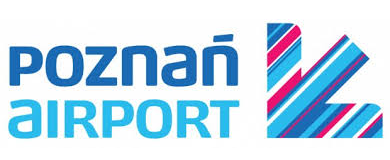

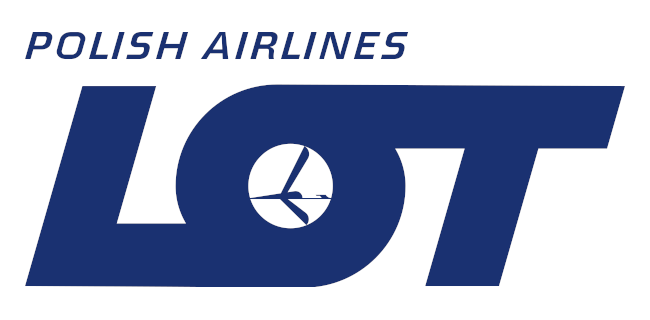

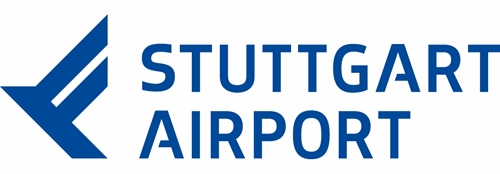
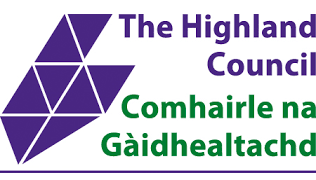
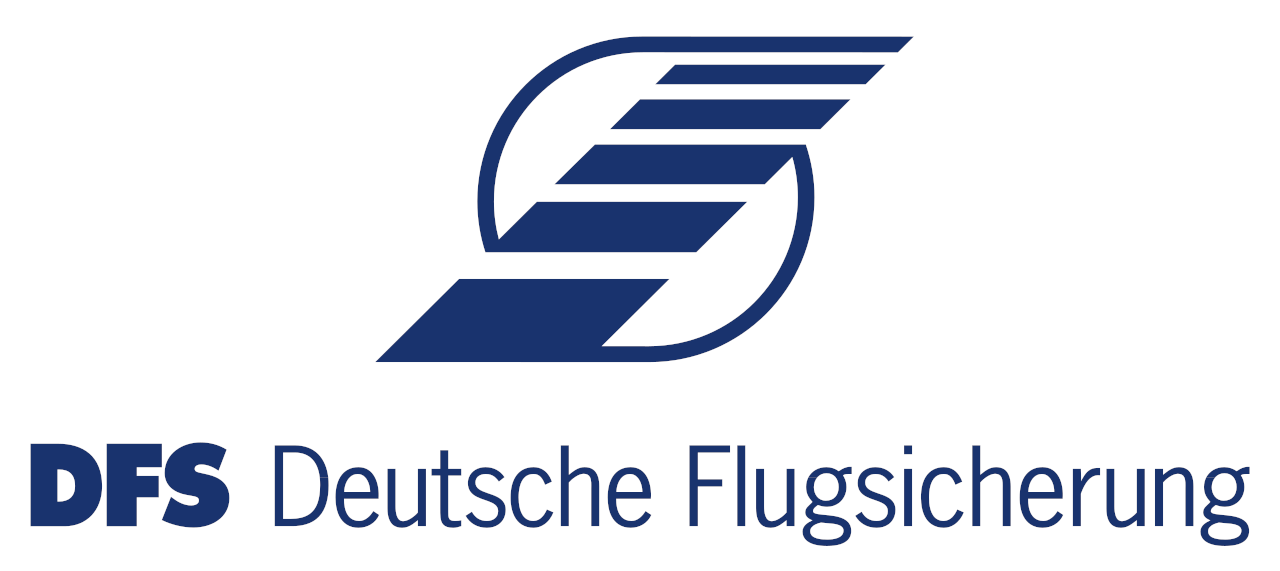

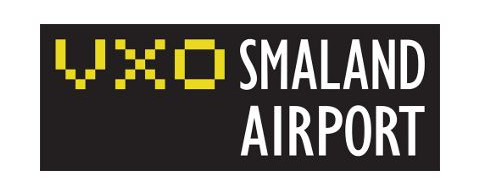
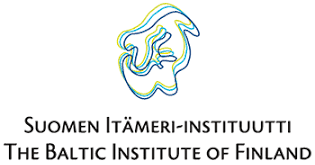





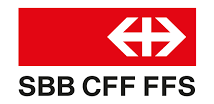

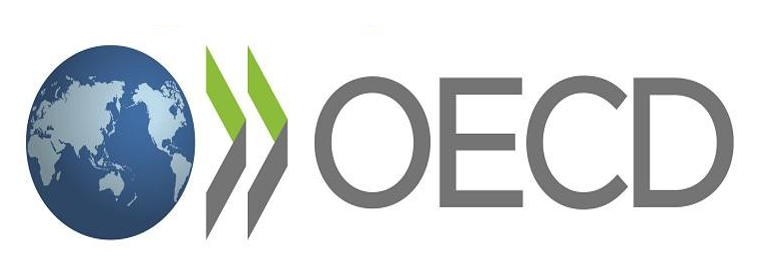


Client & Partner Geomap
Due to competitive reasons some of our clients prohibit the publication of their names and of the studies / research work which we fully respect and understand as service provider.
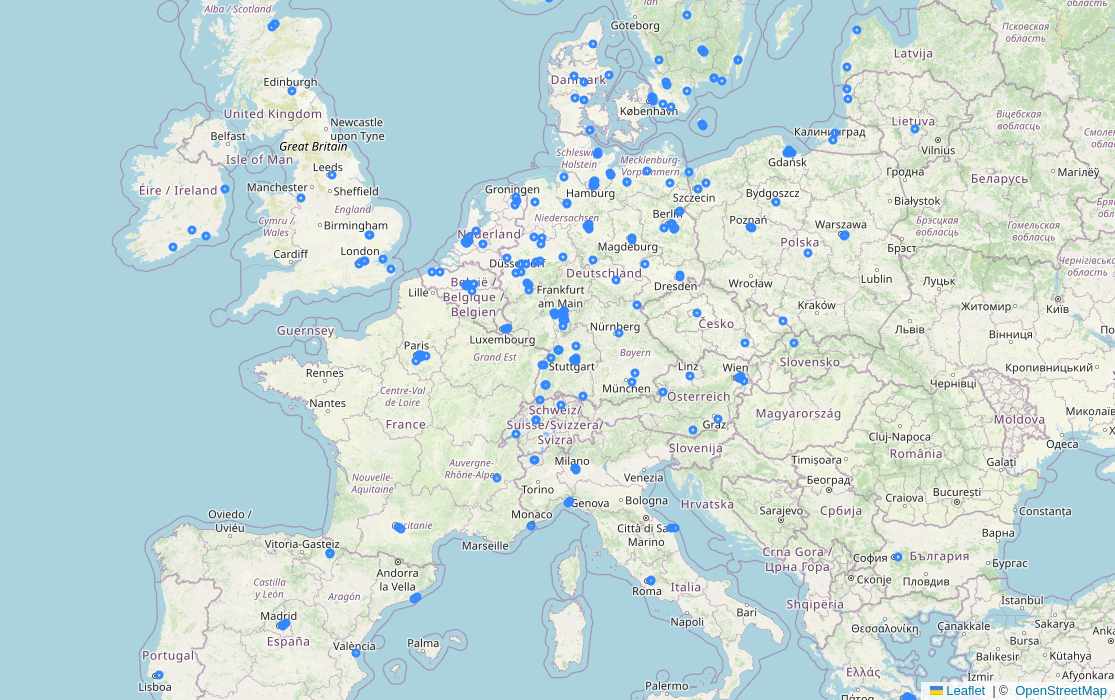
Client & Partner List
Due to competitive reasons some of our clients prohibit the publication of their names and of the studies / research work which we fully respect and understand as service provider.
Axmann Geoinformation, Gaenserndorf |
Flughafen Graz Betriebs GmbH, Feldkirchen / Graz |
Flughafen Linz GmbH, Hörsching |
Flughafen Wien AG, Wien |
HERRY Traffic Planning Consulting, Wien |
Kärntner Flughafen Betriebsgesellschaft mbH, Klagenfurt |
Salzburger Flughafen GmbH, Salzburg |
The Interdisciplinary Centre for Comparative Research in the Social Sciences (ICCR), Wien |
TINA Office, Wien |
TUW Technische Universitiät Wien, Forschungsbereich für Verkehrsplanung und Verkehrstechnik |
Airports Council International (ACI) - Europe, Brussels |
Coherence S.P.R.I., Louvain-La-Neuve |
Eurocontrol, Brussels |
Europäische Kommission, DG IA (DG Competition), Brussels |
Europäische Kommission, DG MOVE, Brussels |
Europäische Kommission, DG VII (DG TREN), Brussels |
Europäische Kommission, DG XVI (DG Regio), Brussels |
Europäische Kommission, Eurostat, Brussels |
European Parliament, Brussels |
IATA, Brussels |
Luchthaven Ostend-Bruges, Ostende |
Province West-Vlaanderen, Bruges |
STRATEC, Brussels |
Transport & Mobility Leuven NV, Leuven |
Institute of transport and Communications Ltd. ITC, Sofia |
Babtie spol. s r.o., Prague |
Jihomoravská rozvojová, s.r.o., South Moravian Development Company LLC, Brno |
Krajský úřad Moravskoslezského kraje, Moravian-Silesian Region, Department of Transportation, Ostrava |
Aarhus Lufthavn A/S, Tirstrup |
Billund Lufthavn A/S, Billund |
Central Denmark Tourism Foundation, Silkeborg |
County of Bornholm (Bornholms Amt Teknisk Forvaltning), Rønne |
County of Vejle (Vejle Amt Udviklingsrad), Vejle |
COWI Consulting Engineers & Planners, Kongens Lyngby |
DTU Technical University of Denmark, Kopenhagen |
EPINION Copenhagen, Copenhagen |
Karup Lufthavn, Viborgs |
NTU Strategic Development and Consulting, Ålborg |
Rapidis a/s, Charlottenlund |
Rønne Airport, Rønne |
Sønderborg Lufthavn, Sønderborg |
TetraPlan, Kopenhagen |
Tallinn Airport Ltd., Tallinn |
Civil Aviation Administration (ILMAILULAITOS) - Head Office, Vantaa |
Helsinki-Vantaa Airport, Helsinki |
Joensuu Airport, Finavia |
Jyväskylä Airport, Finavia |
Jyväskylän Seudun Kehittämisyhtiö Jykes Oy, Jyväskylä |
Kemi-Tornio Airport, Finavia |
Kittilä Airport, Kittilä |
LT-Consults Ltd., Helsinki |
Maakuntaliitto, Seinäjoki |
Ministry of the Interior (Sisäasianministeriö), Helsinki |
Oulu Airport, Finavia |
Oy Viisikko - Femman AB, Tampere |
Pirkkala Municipality, Pirkkala |
Pohjois-Karjalan Maakuntaliitto, Joensuu |
Regional Council of Lapland, Rovaniemi |
Regional Council of North Karelia, Joensuu |
Regional Council of South Ostrobothnia, Etelä-Pohjanmaan |
Regional Council of Southwest Finland, Turku |
Rovaniemi Airport, Rovaniemi |
Savonlinna Airport, Finavia |
Savonlinnan Yrityspalvelut Oy , Savonlinna Business Services, Savonlinna |
Seinäjoki Airport, Rengonharju-säätiö, Pojanluoma |
Suomen Itämeri-Instituutti, The Baltic Institut of Finland, Tampere |
Tampere Airport, Finavia |
Turku Airport, Turku |
VTT Technical Research Center of Finland, Espoo |
BETA, Universität Louis Pasteur, Strasbourg |
CATRAM Consultants, Paris |
Communauté Urbaine de Strasbourg, Strasboug |
Ecole Nationale des Ponts et Chaussees, Paris |
ENERDATA, Grenoble |
INRETS - (NESTE) Department of Transport Economics and Sociology (DEST), Arcueil Cedex |
MELTT/DAEU/SES, Paris |
Nice Cote d'Azur Airport, Nice |
Nouveaux Espaces de Transport en Europe Application de Recherche (NESTEAR), Paris |
OECD, Paris, France |
ONERA Départment Prospective et Synthèse, Toulouse |
SNCF Societe National des Chemins de fer Francais, Abteilung Grandes Lignes, Paris |
TA Technicatome, Gif-sur-Yvette-Cedex |
Taylor Nelson SOFRES Conseil, Montrouge Cedex |
Toulouse-Blagnac Airport, Toulouse |
ADL - Arthur D. Little International Inc., Berlin (Frankfurt) |
ADV Arbeitsgemeinschaft Deutscher Verkehrsflughäfen, Berlin |
ADV Arbeitsgemeinschaft Deutscher Verkehrsflughäfen, Stuttgart |
advolar GmbH, Hannover |
Airail AG, Berlin |
Baden-Airpark GmbH, Flughafen Karlsruhe / Baden-Baden, Rheinmünster |
Barnim County, Eberswalde |
BBF - Berlin Brandenburg Flughafen Holding, Berlin |
Berlin Schönefeld Flughafen GmbH, Berlin |
BMT Transport Solutions GmbH, Hamburg |
BMVBW - Bundesministerium für Verkehr, Bau- und Wohnungswesen, Berlin und Bonn |
BVU - Beratergruppe Umwelt und Verkehr, Freiburg/Brsg. |
Christian-Albrechts Universität Kiel, Kiel |
CPL Competence in Ports and Logistics GmbH |
DaimlerChrysler AG, Mannheim / Stuttgart |
Deutsche Bahn AG, Reise & Touristik, Frankfurt |
Deutsche Bahn AG, Zentrale Konzern Entwicklung, Frankfurt |
Deutsche Lufthansa AG, Lufthansa Aviation Center |
Deutsche Telekom AG, Darmstadt / Bonn |
Deutsches Institut für Wirtschaftsforschung ECON GmbH, Berlin |
Dezernat für Finanzen, Beteiligungen und Migration, Münster |
DFS - Deutsche Flugsicherung GmbH, Langen |
DLR - Deutsches Zentrum für Luft- und Raumfahrt e. V., Göttingen |
DLR - Deutsches Zentrum für Luft- und Raumfahrt e.V., Köln |
Eurowings Aviation GmbH, Köln |
Flughafen Berlin Brandenburg GmbH, Berlin |
Flughafen Betriebsgesellschaft Cuxhaven/Nordholz GmbH, Nordholz |
Flughafen Bremen GmbH, Bremen |
Flughafen Dortmund GmbH, Dortmund |
Flughafen Dresden GmbH, Dresden |
Flughafen Erfurt GmbH, Erfurt |
Flughafen Friedrichshafen GmbH, Friedrichshafen |
Flughafen Hamburg GmbH, Hamburg |
Flughafen Hannover-Langenhagen GmbH, Langenhagen |
Flughafen Heringsdorf GmbH, Zirchow |
Flughafen Hof-Plauen GmbH & Co. KG, Hof |
Flughafen Leipzig-Halle GmbH, Leipzig |
Flughafen Lübeck GmbH, Lübeck |
Flughafen Magdeburg GmbH, Magdeburg |
Flughafen München GmbH, München |
Flughafen Münster/Osnabrück GmbH, Greven |
Flughafen Neubrandenburg Trollenhagen GmbH, Trollenhagen |
Flughafen Niederrhein GmbH, Weeze |
Flughafen Nürnberg GmbH, Nürnberg |
Flughafen Paderborn/Lippstadt GmbH, Büren |
Flughafen Rostock-Laage GmbH, Weitendorf |
Flughafen Stuttgart GmbH, Stuttgart |
Franke Aviation & Transportation Consulting, Korschenbroich |
Fraport AG, Frankfurt |
Fraunhofer Institut für Materialfluss und Logistik, Dortmund |
Fraunhofer Institut Informations- und Datenverarbeitung, Karlsruhe |
German Airport Consulting (GAC), Hamburg |
HaCon Ingenieurgesellschaft mbH, Hannover |
Hamburgisches Weltwirtschafts-Archiv (HWWA), Hamburg |
Handelskammer Hamburg, Hamburg |
Helmholtz-Gemeinschaft Deutscher Forschungszentren e.V., Berlin |
Hessen Agentur GmbH, Innovations- & Nachhaltigkeitsprojekte, Wiesbaden |
Hessisches Ministerium für Wirtschaft, Energie, Verkehr und Wohnen, Wiesbaden |
Holm e. V., Frankfurt/Main |
HPC Hamburg Port Consulting GmbH, Hamburg |
IFOK - Institut für Organisationskommunikation GmbH, Bensheim |
IfV - Institut für Verkehrswesen, Universität (TH), Karlsruhe |
IfW - Institut für Weltwirtschaft, Kiel |
IMA Richter & Röckle, Freiburg |
Ingenieurbüro für Verkehrswesen Koehler, Leutwein und Partner GbR, Karlsruhe |
Ingenieurbüro W. Grote GbR, Papenburg |
Institut für Verkehrswesen und Verkehrsbau, Universität GH, Essen |
IVT - Institut für angewandte Verkehrs- und Tourismusforschung e.V., Heilbronn |
IWW - Institut für Wirtschaftspolitik und Wirtschaftsforschung, Universität (TH), Karlsruhe |
Kämmerei / Beteiligungsgesellschaft des Kreises Steinfurt mbH |
Kieler Flughafengesellschaft mbH, Kiel-Holtenau |
KIT, Karlsruhe Institut of Technology, ECON |
LBST Ludwig-Bölkow-Systemtechnik GmbH, Ottobrunn |
Lufthansa Cargo AG, Frankfurt |
Lufthansa Technik AG, Hamburg |
Ministerium für Bauen, Wohnen, Stadtentwicklung und Verkehr des Landes Nordrhein-Westfalen, Düsseldorf |
Ministerium für Verkehr, Bau und Landesentwicklung des Landes Mecklenburg-Vorpommern, Schwerin |
Ministerium für Wirtschaft und Arbeit - Sachsen, Dresden |
Ministerium für Wirtschaft und Europaangelegenheiten, Potsdam |
Ministerium für Wirtschaft, Arbeit und Verkehr des Landes Niedersachsen, Hannover |
Ministerium für Wirtschaft, Technologie und Verkehr des Landes Schleswig-Holstein, Kiel |
Ministerium für Wirtschaft, Verkehr, Landwirtschaft und Weinbau - Rheinland-Pfalz, Mainz |
Ministerium für Wohnungswesen, Städtebau und Verkehr - Sachsen-Anhalt, Magdeburg |
Oliver Wyman Consulting GmbH, Frankfurt |
PricewaterhouseCoopers AG, Frankfurt |
PTV System Software und Consulting GmbH, Berlin |
schauinsland-reisen gmbh, Duisburg |
Senator für Wirtschaft und Häfen der Freien Hansestadt Bremen, Bremen |
Steierwald Schönharting und Partner GmbH (SSP), Stuttgart |
Stöcker Flughafen GmbH & Co.KG, Lübeck |
SunExpress Güneş Ekspres Havacılık A.Ş., Frankfurt/Main |
Technische Universität Darmstadt, Institut für Flugsysteme und Regelungstechnik, Darmstadt |
TfK Transportforschung GmbH, Hamburg |
Tower Finow GmbH, Eberswalde |
Uniconsult - Universal Transport Consulting GmbH, Hamburg |
Verkehrswissenschaftliches Institut, Universität Stuttgart, Stuttgart |
Waldeck Rechtsanwälte PartmbB, Frankfurt |
Wirtschaftsbehörde der Freien und Hansestadt Hamburg, Hamburg |
Wirtschaftsministerium - Mecklenburg-Vorpommern, Schwerin |
Agilis S.A. Statistics & Informatics (vorhergehend: Liaison Systems S.A.), Athen |
Athens International Airport S.A., Athens |
Athens University of Economics and Business, TRANsp. Sys. and LOGistics Laboratory, Athens |
Heraklion International Airport, Heraklion |
Institute of Communication and Computer Systems (ICCS/E3M-Lab), Athens |
INTRASOFT International S.A., Athens |
NTUA National Technical University of Athens, Athen |
Systema, Systems Planning & Management Consultants S.A., Psichiko |
IC Aviation Ltd., Dublin |
NEC CRTC Cork Regional Technical College, Cork |
South-East Regional Authority, Clonmel, Co. Tipperary |
Waterford Airport, Waterford |
Israel Aerospace Industries Ltd., B.G. International Airport |
Aeroporto di Ancona-Falconara, Ancona |
Aosta Valley Region, Aosta |
Aoste Airport, Aosta |
G. & C. Holding SRL, Milano |
Genova Airport Cristoforo Colombo, Genova |
Istituto di Studi per l'Integrazione dei Sistemi (ISIS), Rom |
Liguria Region, Genova |
PWC PriceWaterhouseCoopers, Mailand |
Regione Marche, Ancona |
TRT Transport e Territorio, Mailand |
TTS Italia, Rome |
SIA Aviasabiedrība Liepāja Ltd., Grobina Parish |
Ventspils City Council, Ventspils |
Kaunas County Governor's Administration, Kaunas |
Kauno Aerouostas, Kaunas District |
Palanga International Airport, Palanga |
CFL Societe National des Chemins de fer Luxembourgois, Luxembourg |
Intrasoft International SA, Luxembourg |
Luxembourg Luxair S.A. Luxembourg |
CE Delft |
DEMIS bv, Decision support and Management Information Systems, Delft |
Luchthaven Groningen-Eelde N.V., Paterswolde |
NEA Transport Research and Training, Rijswijk |
Panteia, Zoetermeer, Nederland |
Parts Supply worldwide B.V., Woerden |
Province Drenthe, Assen |
Province Groningen, Groningen |
RAND Europe, Leiden |
Schiphol Group, Amsterdam |
TNO Inro - Institute for Infrastructure, Transport and Regional Development, Delft |
TU Delft University of Technology, Delft |
C.R.T. - Centre de Recherche sur les Transports, University of Montréal, Canada |
Institute of Transportation Studies, University of California, Berkeley |
M2P Consulting Inc., New York |
Oicometra Inc., Montréal, Canada |
SAIC, Mc Lean, Virginia |
Université de Montréal, Département de sciences économiques, Montréal, Canada |
Alesund Airport, Vigra |
Bodø Airport, Avinor |
City of Stavanger, Stavanger |
Institute of Transport Economics (TOI), Norway |
Institute of Transport Economics, Oslo |
Kristiansand Airport, Kjevik |
Molde lufthavn, Årø, Avinor |
More og Romsdal Fylkeskommune, Molde |
Nordland County Council, Bodø |
SINTEF Transport Engineering, Trondheim |
Stavanger Airport, Sola |
Vest-Agder Fylkeskommune, Kristiansand |
Marshal Office of the Wielkopolska Voivodship, Poznan |
Ministry of Infrastructure, Warsaw |
OBET Research Institute for Transport Economics, Szczecin |
PLL LOT S.A. Warsawa |
Pomeranian Chamber of Commerce and Industry, Gdansk |
Port Lotniczy Bydgoszcz S.A., Bydgoszcz |
Port Lotniczy Gdansk-Trójmiasto sp. z o.o., Gdansk |
Port Lotniczy Goleniow-Szczecin, Goleniow |
Port Lotniczy Lódz im. Wladyslawa Reymonta sp. z.o.o., Lodz |
Port Lotniczy Poznań-Ławica Sp. z. o.o., Poznań |
PWC PriceWaterhouseCoopers, Warsaw |
The Governor of Gdansk Providence, Gdansk |
University of Gdansk, Department of Comparative Analyses of Transportation Systems, Gdansk |
University of Gdansk, Faculty of Economics, Sopot |
TIS.PT, Consultores em Transportes, Inovação e Sistemas, S.A., Lisboa |
Kaliningrad Airport, Kaliningrad |
Regional Transport Administration, Kaliningrad |
University of Zilina, Department of Highway Engineering, Zilina |
AENA Air Navigation System Development Division, Madrid |
Aeroport del Prat, Barcelona |
Aeroporto de Pamplona, AENA, Pamplona |
Fundación de los Ferrocarriles Españoles, Madrid |
ISDEFE Ingeniería de Sistemas, Madrid |
Madrid - Barajas Airport, Madrid |
MCRIT SL, Barcelona |
Navarra Government, Pamplona |
SODENA Sociedad de Desarrollo de Navarra, S.L., Pamplona |
Valencia Airport, Manises/Valencia |
goTO Nordics AB, Kalmar |
Halmstad Flygplats AB, Halmstad |
Jönköping Flygplats AB, Jönköping |
Kalmar Flygplats, Kalmar |
Karlstad Flygplats, Karlstad |
Karlstad Kommun, Karlstad Kommun Kommunledningskontoret, Karlstad |
Klippan Kommun, Klippan |
Kristianstad Airport, Everöd |
Kronoberg County Council, Växjö |
Ljungbyhed Airport, Ljungbyhed |
Luftfartsverket - Malmö - Sturup Airport, Malmö |
Norrköping Flygplats AB, Norrköping |
Örebro Läns Flygplats AB, Örebro |
Region of Skåne, Skåne |
Ronneby Airport, Swedavia, Ronneby |
Ronneby Luftfartsverket, Swedavia, Ronneby |
Smaland Flygplats AB, Växjö |
Temaplan AB, Stockholm |
The Blekinge Region, Karlskrona |
Transek AB, Solna |
Växjö Municipality, Växjö |
Växjö Smaland airport |
ECOPLAN, Bern |
Eidgenössische Technische Hochschule Zürich (IVT), Zürich |
Prognos AG, Basel |
routeRANK Ltd, Lausanne |
SBB / CFF / FFS Switzerlanderische Bundesbahnen, Abteilung Personenverkehr Fernverkehr, Bern |
SunExpress Güneş Ekspres Havacılık A.Ş., Antalya |
BMT Baxter Eadie Limited, London |
CERTE, Universität Kent, Canterbury |
DETR The Department of Environment, Transport and the Regions (DST), London |
Highland and Island Airports Ltd. (HIAL), Inverness |
Highlands and Islands Enterprise, Inverness |
Inverness Airport, Inverness |
ITS - Institute for Transport Studies, University of Leeds, Leeds |
London Southend Airport Company Ltd., Southend-On-Sea |
MDS Transmodal Ltd., Chester |
ME&P Marcial Echenique and Partners, Cambridge |
NAPIER University, Transport Research Insitute, Edinburgh |
Ocean Shipping Consultants Limited, Chertsey, Surrey |
WCMC World Conservation Monitoring Center, Cambridge |
Project Examples
To demonstrate the flexibility and variety of the model approach developed at MKmetric and to shed a light on our skills, some projects are outlined and grouped by the categories of expertise: Transport policy, Infrastructure, Market analyses, Modelling, Research and Route development. Please note that projects are assigned to the most suitable category where expertise overlap or cumulate.
In case of specific questions about certain projects and our qualification we are at your disposal and delighted to answer personally. Reference letters will be provided in relation to a specific project proposal.
Transport policy
Ticket Tax Revocation
Basic evaluation for an air transport concept of the German government
Federal Ministry of Transport and Digital Infrastructure of Germany
Concept for a Central Airport Poland – Analytical work of the national air transport system, development of scenarios, and forecasts up to 2035
Polish Ministry of Infrastructure
HIGH-TOOL; development of a high level strategic decision tool for transport policy measure assessment covering passenger and cargo transport for Europe up to the year 2050
European Commission
ETISplus - European Transport policy Information System Development and implementation of data collection methodology for EU transport modelling
European Commission
Integrated Ticketing for EU-Passenger Transport
European Parliament
Infrastructure
Development perspective of an Airport
Market Analyses
Analyses of a stronger engagement of carriers with home base in the Gulf-states upon the German aviation system
Modelling
Development of an Airport Choice Model for an Airline
Research Co-operation
Research co-operation Air Cargo
- - Competition analyses and ex post forecast of air cargo
- - Air cargo model
- - Air cargo strategy / scenarios
- - Route development
Route Development
Implementation Folder for the inauguration of routes at an airport
South Baltic Global Access – Air passenger market potential analysis
Baltic Bird - Air passenger market potential analysis
Ticket Tax Revocation

Some airports are regulated by imposing a ticket tax due to their unique competitive position. It had to be investigated whether this regulation still holds true when considering the inter- and intra-modal demand effects when revoking the ticket tax implemented. The reason for revoking the ticket tax is based on an extended high speed rail network which makes access / egress convenient to widely spread competitive airports and the increased competitive situation in the airline industry influencing the airport and route choice of travellers.
The ‘X-VIAP passenger’ approach was used to determine the passenger behaviour with focus on the inter- and intra-modal competition, namely the access / egress choice and the route and airport choice of air passengers within the aviation mode. To investigate the effects of a reversal of the ticket tax a scenario analysis has been performed.
Basic evaluation for an air transport concept of the German government

The study consisted of 4 work packages and was assigned to a consortium. MKmetric was responsible for work package 3 and 4 and contributed to 1 and 2.
- Detailed market and competition analysis of the German aviation market. Relevant international market participants were evaluated and relevant trends in aviation such as business strategies, technical advances, and activities of air carriers were evaluated with regards to their impact on the current development of the German aviation market. The analysis resulted in a number of proposed policy measures. These policy measures allow the Federal government to influence the current and future situation of the German, European, and international aviation markets. For the proposed policy measures, interdependencies were identified and on this basis a matrix of effects was developed. The combination of the effects matrix and a description of the German air traffic market provided a starting point for further analyses.
- Economic evaluation of the German aviation market. The evaluation examined relevant correlations between the aviation market and the rest of the economy, the role and importance of the aviation market in mobility and logistics, as well as environmental effects of aviation.
- Delineation of imminent development trends in the air transport industry and the implications for the future. The outcome represents the reference air transport development up to the year 2030 for air passenger and cargo transport. In the context of this task, air and surface feeder service networks were investigated (ferry was assigned to either the main modes rail or car depending on the services offered), analyzed and implemented according to the regionalization of the model system ‘X-VIA’. Multi-, intra- and inter-modality were considered for the reference case 2030. All transport activities from, to, within, and across Europe were reflected. Consistency to the base data of the existing federal master plan of Germany, such as socio-economy, infrastructure and transport interconnectivity, was ensured. The computations were executed by applying ‘SONARNetGen’. Multiple analyses, such as air transport demand, catchments, leakage, connectivity, accessibility, were executed for 28 German airports– ranging from less than 0.1 Mio. up to 60 Mio. Passengers per year – whilst competing airports along the national border and hubs located outside Germany were considered.
- Based on the reference case several scenarios were developed. The policy measures identified in work package 1 were used to define which of the proposed policy measures would be necessary and feasible to match three pre-defined scenario targets. Advantages and disadvantages of the three investigated scenarios were also assessed. The scenario simulations were based on the ‘SONARNetGen’ modelling system considering multi-, intra- and inter-modal effects under consideration of different types of air carriers in the context of their cost structure and development strategy. The policy measures assessed covered a wide range from taxation, emission schemes, security, bilateral air service agreements, planning procedures, air traffic management, slot assignment, noise, and alternative fuels, to fees and charges. Economic effects resulting from the scenarios were investigated and analysed.
Concept for a Central Airport Poland – Analytical work of the national air transport system, development of scenarios, and forecasts up to 2035

The project was executed based on the request of policy decision makers to deliver facts on the further development of the Polish air transport including potential investments into existing and new infrastructure.
The project was structured in four work packages whereby MKm was responsible for the second one consisting out of the ex ante forecast for the air transport market in Poland until 2035. This required air transport system wide forecasts using ‘SONARNetGen‘ whilst considering different aspects such as competition among national and foreign airports. Inter-modal effects and necessities when implementing new high speed rail services and road infrastructure linking the central hub airport in Poland to the regions were considered according to the infrastructure investment plan. The changes in the airline market structure in relation to three development strategies of the national carrier had been implemented as well. And finally three economic development options for the timeline 2010-2015-2025-2035 resulted in different demand scenarios.
Out of the permutation of these aspects a set of 18 scenarios had been selected for forecasting passenger and cargo transport for up to 21 airports. The forecasts considered the development of the Polish airports and the national carriers in parallel whilst taking into account the development of further 45 extra territorial competitors. The full report has been published.
HIGH-TOOL; development of a high level strategic decision tool for transport policy measure assessment covering passenger and cargo transport for Europe up to the year 2050

On the basis of EU policy requirements a modular framework for the strategic policy assessment tool was developed. The tool consists of the following modules: Passenger Demand; Freight Demand; Demography; Economy & Resources; Vehicle Stock; Environment; and Safety. Each module is further divided into sub-modules. A Database is required to facilitate the data exchange between the modules, to provide exogenous input data for the modules and to store output data. Finally the user interface allows the operation of the model and provides access to assessment results in a user-friendly way. In 2017 the German Mobility Award was awarded to the project.
The project was assigned to a consortium. MKmetrics’ responsibility addressed the development of the model structure, data flows and model sensitivities in the light of transport policy measures. Furthermore the focus was on air transport modelling and assessment where a high level adaptation of the ‘X-VIA’ approach was used. Contributions were made throughout the project, software was tested and validated. It has to be noted that the data stock used is provided by ETISplus, a project of the European Commission where MKmetric provided all air service and passenger / cargo demand data as well as information related to air transport, covering inter-modal linkages.
HIGH-TOOL; development of a high level strategic decision tool for transport policy measure assessment covering passenger and cargo transport for Europe up to the year 2050

On the basis of EU policy requirements a modular framework for the strategic policy assessment tool was developed, consisting of the Passenger Demand, Freight Demand, Demography, Economy & Resources, Vehicle Stock, Environment, and the Safety module. Each module is further divided into sub-modules. A Database is required to facilitate the data exchange between the modules, to provide exogenous input data for the modules and to store output data. Finally the user interface allows the operation of the model and provides access to assessment results in a user-friendly way. The project was assigned to a consortium. MKmetrics’ responsibility concerned the development of the model structure, data flows and model sensitivities in the light of transport policy measures. Furthermore the focus was on air transport modelling and assessment. Contributions were made throughout the project, software was tested and validated. It has to be noted that the data stock used is provided by ETISplus, a project of the European Commission where MKmetric contributed as well all supply and demand data and information related to air transport, covering as well inter-modal linkages.
ETISplus - European Transport policy Information System Development and implementation of data collection methodology for EU transport modelling

European Transport Policy Makers have an on-going requirement for good quality information. This addresses data to support models, evaluation methodologies and indicator frameworks of the European Commission. Without information integration, the Commission lacks a consistent data source to investigate transport and policy measures.
MKm was responsible for all aviation related data covering infrastructure, service and demand data for passenger and cargo transport. The work performed addressed: exploitation of data collection barriers and solutions to overcome the data gap as well as the development of a concept; design of the data model; collection, validation, harmonisation, gap handling, implementation of data and information; demand and supply analyses; ex post forecasting; clearance to fill the data base for all modes (rail, road, ferry, air, inland waterway, deep sea).
Integrated Ticketing for EU-Passenger Transport

The study provides comprehensive background related to the different implementations of the integrated ticketing at EU and international level. A further objective of the study is providing in-depth analysis of selected best practices of integrated ticketing schemes in order to highlight the main drivers and barriers. Strengths and weaknesses as well as opportunity and threats linked to the existing integrated ticketing solutions and their likely future development are highlighted. For each of them, the present study draws a set of observations and recommendations addressing the possible levels and actions for the EU-policy.
Development perspective of an Airport

MKmetric developed a variety of cutting edge analysis for this airport.
- A descriptive analysis of supply and demand was executed in respect to the socio-economic market environment of the airport. This encompassed as well competitor’s strengths.
- The SONAR360° tool was used to determine the air passenger market potential diversified for different development strategies. This encompassed the identification and discussion of routes; passenger structure and distribution; technical information.
- Long term forecast 2020, 2025, 2030 were made using the SONARNetGen tool considering the determinants of transport, access / egress by surface modes, and air traffic management information.
- Implications for the airport were investigated addressing infrastructure capacity, regional accessibility, and travellers’ benefits.
Analyses of a stronger engagement of carriers with home base in the Gulf-states upon the German aviation system

The focus of the study concerned the investigation of increased engagement of the Gulf-carriers in Europe to elaborate the effects upon the German air transport system. The huge orders of long-haul aircraft launched by the Gulf carriers in combination with the high pressure of the Gulf nations for extensions of the existing air service agreements across Europe triggered the question about an impact assessment of a strong market presence of these airlines in Europe.
Especially for Germany a stronger engagement of the Gulf-carriers at other airports in Germany violates the catchment areas of the airports Dusseldorf (DUS), Hamburg (HAM), Frankfurt (FRA) and Munich (MUC) for originating traffic. The hub functionality of Frankfurt (FRA) and Munich (MUC) are challenged by new nonstop-services and redirected routings via the Gulf-hubs as well. The same situation relates for all other European states in that hubs are affected with the redirection of European passenger flows and their hub function being substituted by the Gulf-hubs. In return the accessibility of export dependent Germany is at risk when international air services have to be cut down reflecting the increased competition in aviation.
Under consideration of the existing fleet structure of all Gulf-carriers in 2012 and under assumption of an ongoing liberalization of the air transport policy the analyses of the local and transfer flows covered the following issues:
- potential development of the Gulf-carrier air networks,
- passenger volumes at German airports,
- passenger volumes on feeder flights from / to German airports,
- catchment of the German airports in focus,
- transfer connections volumes at the German airports in focus,
- shift of transfer traffic via German airports towards non-stop services,
- shift of transfer traffic via German airports towards routings via Gulf-hubs.
Research co-operation Air Cargo

MKmetric and an airport allied and started a research co-operation for the development of air cargo transport. During the co-operation following projects were performed.
- The targets for the first project concerned data gap handling and air cargo model validation. Both elements allow a transparent view upon the air cargo market to analyse the competitive situation as well as testing potential tactical and strategic ex post and ex ante scenarios. Another issue concerned the simulation of air transport politics such as night ban regulations or the emission fees. Furthermore the developed system allowed in detail the analysis of cargo flows and transshipments, determination of true origin / destination, routings and transshipment points, catchments and route competitors. Beside the analysis described the computation of scenarios for the airports’ decision makers build a substantial part of the project.
- The second project addressed the development of a specific air cargo transport model for the airport to investigate supply side strategies and the development of routes.
- The third project extended the modelling scope to cover more detailed effects of shippers, airlines and traders behaviour. In addition the markets were refined on the intercontinental base geographically and a validation on regional base took place down to producer and consumer level.
- Finally the floor for a new air cargo strategy had been provided by outlining the true O&D-based cargo flows, a demand forecast and the investigation of volumes lost from the airports catchment to adjacent hubs as well as the leakage on transshipments. Several new routes had been identified, evaluated and meanwhile are inaugurated by airlines, whereby for some other routes service adjustment has been proposed and realized.
Development of an Airport Choice Model for an Airline

MKmetric focused on the determination of consumer sensitivity towards the characteristics of air service alternatives. The modelling of the problem enabled to make the consumers change of behaviour transparent and to take action on the supply side to attract demand on the airline specific supply.
Major analysis addressed the competition between different air services offered at one airport as well as air services competing from different airports to equal destinations (intra-modality). The model allows for the status quo situation to elaborate the existing competitive situation of the network or a single route the simulation of any future strategic, tactical and operational scenario (e.g. schedule variation, network strategies) as well as to determine gains and losses, competitive position and cannibalizations, or strategic investments while combining different airlines networks.
After successful implementation of the models and software at the clients premises and an intensive validation of the products quality additional services were ordered. This concerned a model extension to cover a larger set of competing air service alternatives allowing for a higher degree of hub traffic investigations. In addition a differentiation of time characteristics reflecting the slot sensitivity to a larger extent was requested. Furthermore the analyses interface was enriched to enhance the incorporation of the results into the existing work processes for network management, route planning and strategic development departments. Finally the system was set up for 20 computer independent user licenses.
Implementation Folder for the inauguration of routes at an airport

The focus of the project was to perform passenger potential analyses for the airport to identify new economically viable routes comparing two scenarios reflecting different long term strategic directions for the two terminals in operation.
The analyses addressed the route specific passenger volumes differentiated by trip purpose, local and transfer passengers, their regional point of origination, and detailed information about each route. The latter concerned the implementation schedule, aircraft type and capacity, service frequency, operation day, and the airline to be approached. All markets have been considered with special focus on the transfer passenger share which was of high importance due to alternative routings via competing hubs and the reflection of network strategies of domestic and international carriers.
South Baltic Global Access – Air passenger market potential analysis

The project focused on the development of air transport networks for a set of five airports in the Baltic Sea region. Improved access to coastal regions of the South Baltic is a major task, which can be achieved by air transport.
As a consequence a comprehensive forecast of the passenger market potential for the airports of the partners involved was requested to be executed (SONAR360°) while understanding the market requirements and allowing for airline marketing to increase the regional accessibility. A core result was the identification of new flight connections among the project partner airports as well as to the world.
Baltic Bird - Air passenger market potential analysis

The project focused on the development of airports and economically viable air services in the North and East of Europe. Hereby the competition within the aviation sector was a prerequisite to be considered. The purpose was to avoid economical unviable investments and market distortions by Public Service Obligation (PSO) routes as sustainability was in focus. Special attention was given to the accessibility of peripheral and ultra peripheral regions. Neither demand data nor commercial operational data were available for a large number of the airports.
To investigate the passenger demand potential the SONAR360° tool was used for each airport separately. Beside air services for the external accessibility to the world also internal flight connections between the set of airports had been identified as well. Meanwhile the majority of routes are inaugurated either as commercial or PSO service.
